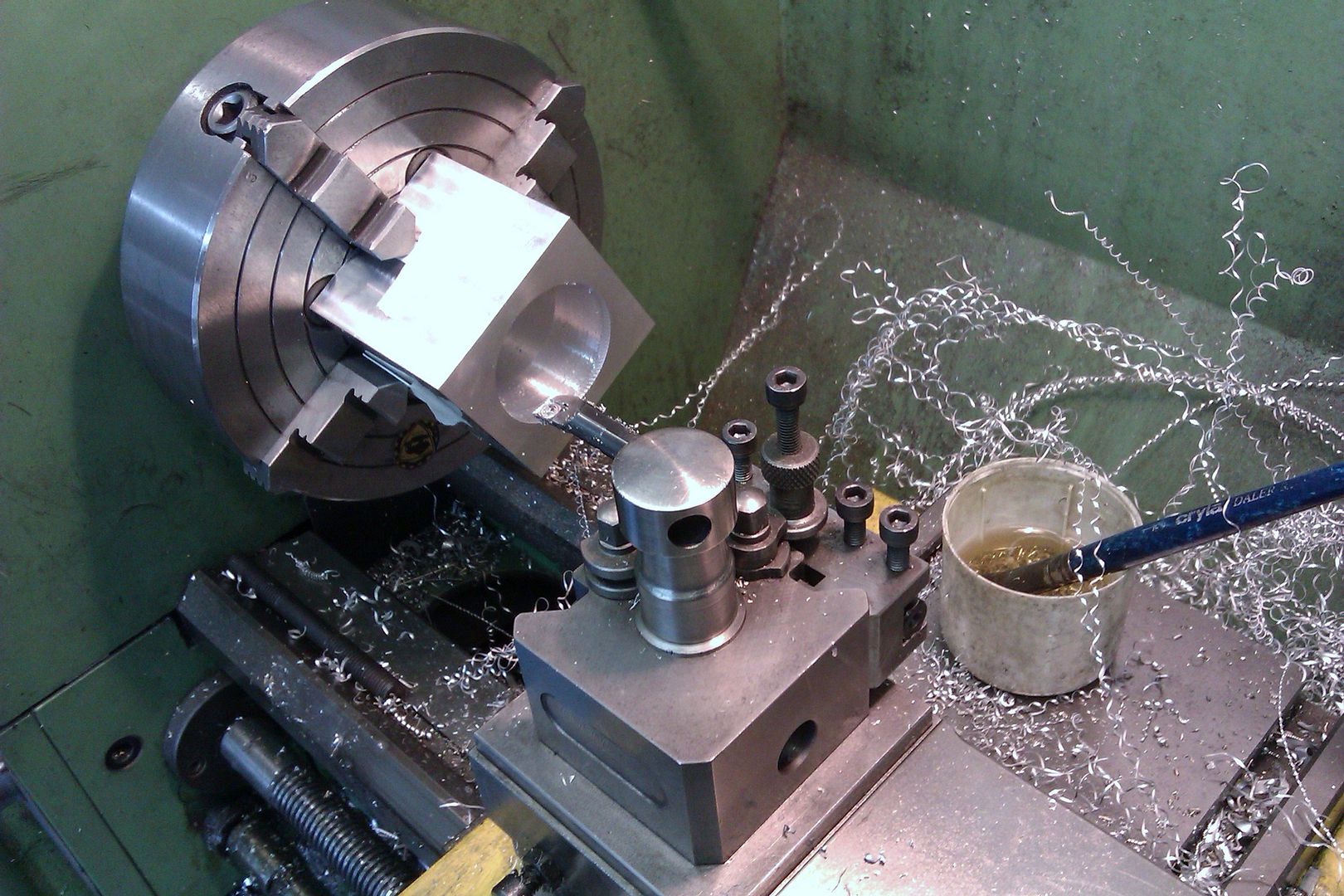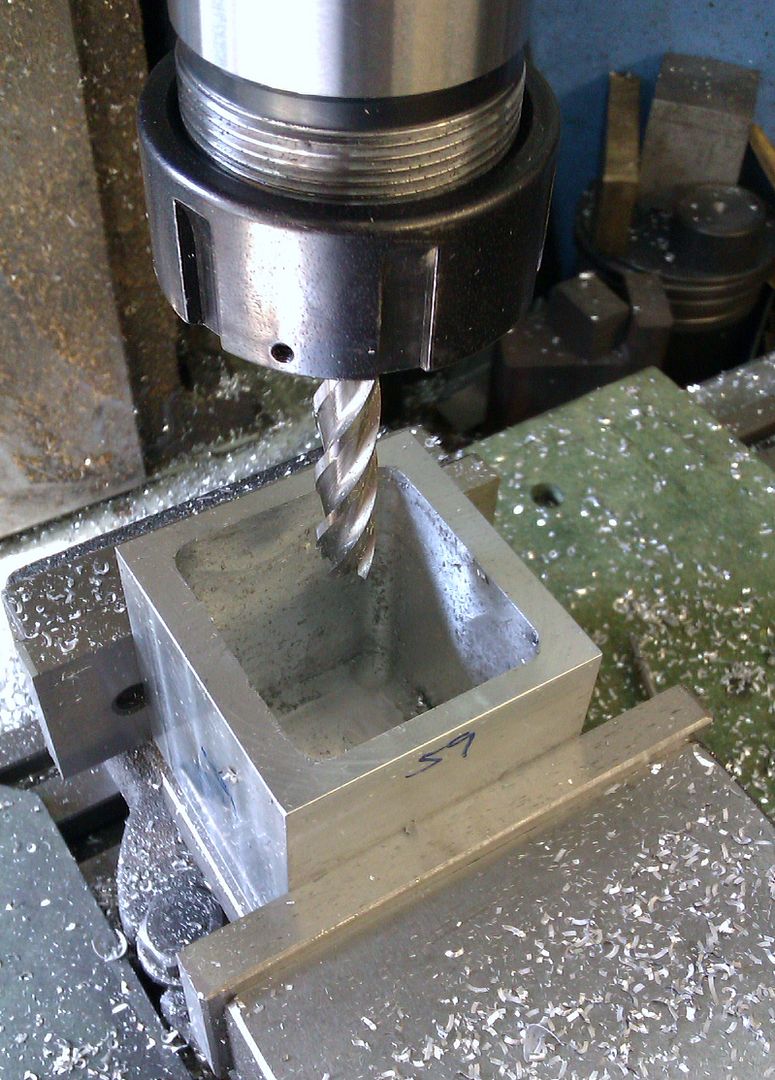stragenmitsuko
Well-Known Member
- Joined
- Jan 19, 2016
- Messages
- 327
- Reaction score
- 143
I seem to have a minor problem when milling a pocket , or better a corner .
This is a pretty deep pocket, 58mm ( 2 1/4 ") and I'm using a very long 10mm
endmill . I need to use that small diam endmill , cause later on the part will be reversed and the rounded corner removed .
I make a U shaped cut , conventional milling . After each pass , the cutter is lowered or better the table is raised 5mm for a next pass .
This is a casting so I'm only cleaning up the edges . Abt 3 mm (1/8" ) to remove from the sides . It varies cause my casting isn't perfect .
In the corner the cutter seems to flex , an instead of having a nicely chamefered corner I'm getting something that looks overcut .
The part is good and fuctional , but I just don't like the look of it .
If this was solid material being carved out , I would drill the corners first 0.5 mm from the edge and then mill it . Then I don't have this problem .
But as this is a casting that won't work .
Any tips or tricks to avoid this .
Pat


This is a pretty deep pocket, 58mm ( 2 1/4 ") and I'm using a very long 10mm
endmill . I need to use that small diam endmill , cause later on the part will be reversed and the rounded corner removed .
I make a U shaped cut , conventional milling . After each pass , the cutter is lowered or better the table is raised 5mm for a next pass .
This is a casting so I'm only cleaning up the edges . Abt 3 mm (1/8" ) to remove from the sides . It varies cause my casting isn't perfect .
In the corner the cutter seems to flex , an instead of having a nicely chamefered corner I'm getting something that looks overcut .
The part is good and fuctional , but I just don't like the look of it .
If this was solid material being carved out , I would drill the corners first 0.5 mm from the edge and then mill it . Then I don't have this problem .
But as this is a casting that won't work .
Any tips or tricks to avoid this .
Pat






































































